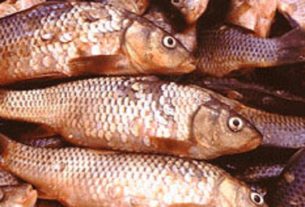There are few places more relaxing than Baja California, and no time better to go there than winter. This Mexican peninsula that straddles the Pacific Ocean and the Sea of Cortez seems to have been created for relieving stress and renewing the spirit. The “winter blues” are banished here, where the only blues are the sunny skies and clear water.
The waters on both sides of the peninsula yield a great number of fish and shellfish species, providing the basis for fresh, healthy and delicious meals. Creativity is important here, where smaller towns, especially along the beaches, do not have much to offer in the way of shopping for ingredients. (See Cooking on the Sea of Cortez: Culinary Adventures in Baja California.)
I’ve prepared many meals on those beaches, often crouched over a camp stove or fire pit, but I am hereby relinquishing the job of camp cook and leaving it to a younger generation. Nowadays, the discovery of restaurant menus is the latest phase in my exploration of Baja. The kitchen and wait staffs are generally willing to share information and even recipes when there is time, and some of these have made successful transitions to my own kitchen.
Baja cuisine was once considered one dimensional. But in recent years, inventive fusion dishes have joined the ranks of the old standbys in Baja’s restaurants. The atmosphere is just as laid back as ever, but the same fresh fish and seafood are treated as the culinary royalty they are. A vanilla beurre blanc served with red snapper complements rather than overpowers the fish. And the affinity for tropical fruit sauces that seems to have taken over restaurants in Mexico is not lost on Baja. A fish filet in mango sauce or a ceviche with tamarind sauce is easy to find, refreshing and delicious.
Even the humble sope — a thick circle of corn dough with a depression in the center, typically filled with beans — becomes an elegant but unpretentious appetizer when filled with shrimp and mushrooms. And a crab cake with enough toasted corn flour to hold it together takes a step out of the ordinary when topped with a smoky-hot chipotle chile sauce. Another abundant Baja ingredient, shrimp, is served with damiana sauce, prepared with tequila and the famous Baja damiana liqueur, made with a local herb and said to be an aphrodisiac.
The old Baja standard, Puerto Nuevo lobster, is given a new lease on life with a version that is steamed and broiled instead of fried in lard. Served with tortillas and fruit salsa, it epitomizes casual culinary sophistication: unfussy, unpretentious, and based on a few good quality ingredients. The Pacific spiny lobster named for the village where it is said to have started was originally fried in lard because that was the only cooking fat available for many years, but nowadays there are other alternatives.
There are still the beloved favorites; the sweet and tangy Mexican style seafood cocktails and the fish tacos dripping with creamy avocado sauce will always be with us. And catching fish for dinner is still rewarding and fun. But it’s somebody else’s turn to cook leaning over a fire pit on the beach. I’ll be sitting back on a lounge chair, watching as my successor turns a fish on the grill while trying not to drop it, reading my notes on Baja’s latest culinary creations and thinking about which ones to reconstruct at home.
- Shrimp in damiana and tequila sauce: Camarones al damiana y tequila
- Red snapper in mango sauce: Huachinango en salsa de mango
- Crab cakes with chipotle sauce: Tortitas de jaiba en salsa de chipotle


